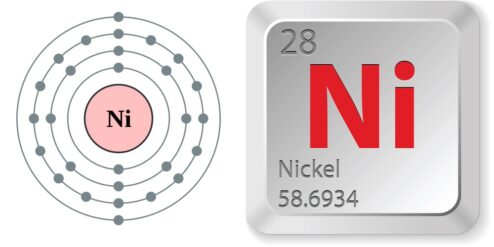Introduzione: Nickel allergy is a common form of dermatitis where the body’s immune system reacts to a protein in nickel, causing a skin rash. This reaction can be triggered by everyday items such as jewelry, coins, keys, and even certain foods. Desensitization to nickel allergy is a topic of interest for many, as it could potentially offer a solution to this widespread problem. This article delves into the science behind nickel allergy desensitization, its methods, risks, and challenges, as well as case studies and future perspectives.
Understanding Nickel Allergy: An Overview
Nickel allergy is a type of contact dermatitis, which is an inflammatory skin condition caused by direct contact with certain substances. It is one of the most common causes of allergic contact dermatitis. Once sensitized to nickel, the body’s immune system reacts whenever it comes into contact with the metal. This reaction can result in a variety of symptoms, including skin redness, swelling, itching, and even blistering. Nickel allergy is more prevalent in women, possibly due to more frequent exposure to nickel-containing jewelry. It can be diagnosed through a patch test, where small amounts of potential allergens, including nickel, are applied to the skin.
The Science Behind Nickel Allergy Desensitization
Desensitization, also known as immunotherapy, is a treatment method that involves exposing the body to small, gradually increasing amounts of an allergen to alter the immune response. The goal is to train the immune system to tolerate the allergen, reducing or eliminating symptoms. In the case of nickel allergy, desensitization can be achieved through oral or topical immunotherapy. The science behind this approach is based on the principle of immune tolerance, where the immune system is trained to recognize the allergen as harmless. Over time, this can lead to a reduction in the severity of allergic reactions.
Methods to Desensitize Nickel Allergy: A Closer Look
Oral immunotherapy for nickel allergy involves taking nickel in pill form in gradually increasing doses. This method has been shown to be effective in reducing the severity of symptoms in some patients. Topical immunotherapy, on the other hand, involves applying a cream or lotion containing small amounts of nickel to the skin. This method is often used in conjunction with oral immunotherapy for maximum effectiveness. Another approach is the use of nickel-tolerant probiotics, which are beneficial bacteria that can help modulate the immune response to nickel.
Risks and Challenges in Nickel Allergy Desensitization
Desensitization to nickel allergy is not without its risks and challenges. Some patients may experience side effects, such as gastrointestinal discomfort, during oral immunotherapy. Topical immunotherapy can also cause skin irritation in some cases. Moreover, not all patients respond to desensitization treatments, and the effectiveness can vary widely. Furthermore, maintaining the desensitization requires ongoing exposure to nickel, which can be difficult to achieve in everyday life. Lastly, more research is needed to fully understand the long-term effects and safety of nickel allergy desensitization.
Case Studies on Successful Nickel Allergy Desensitization
Several case studies have reported successful desensitization to nickel allergy. For instance, a study published in the Journal of Investigative Dermatology reported a significant reduction in symptoms in patients who underwent oral immunotherapy. Another study published in the Journal of Allergy and Clinical Immunology reported similar results with topical immunotherapy. These studies provide promising evidence for the effectiveness of nickel allergy desensitization, although more extensive research is needed.
Future Perspectives in Nickel Allergy Desensitization
The field of nickel allergy desensitization is rapidly evolving, with new research and treatment methods being developed. One promising area of research is the use of biologics, which are drugs made from living organisms that can target specific parts of the immune system. Another potential approach is gene therapy, which involves modifying the genes involved in the immune response to nickel. While these methods are still in the experimental stages, they offer exciting possibilities for the future of nickel allergy desensitization.
Conclusioni: Nickel allergy is a common and often troublesome condition. Desensitization offers a promising approach to treatment, with several methods showing potential effectiveness. However, more research is needed to fully understand the risks, challenges, and long-term effects of these treatments. As the field continues to evolve, it is hoped that more effective and accessible treatments for nickel allergy will be developed.
Per approfondire:
- Nickel allergy – Mayo Clinic: Comprehensive overview of nickel allergy, its causes, symptoms, and treatments.
- Oral Hyposensitization to Nickel Induces Clinical Improvement and a Decrease in TH1 and TH2 Cytokines in Patients with Systemic Nickel Allergy Syndrome: A study on the effectiveness of oral immunotherapy for nickel allergy.
- Topical Immunomodulators for the Treatment of External Allergic Diseases: An article discussing the use of topical immunotherapy in treating allergic diseases, including nickel allergy.
- Nickel Allergy: How It Develops and Can Be Prevented: A detailed article on how nickel allergy develops and potential prevention strategies.
- The Future of Allergen Immunotherapy: An article discussing the future perspectives in allergen immunotherapy, including nickel allergy desensitization.


